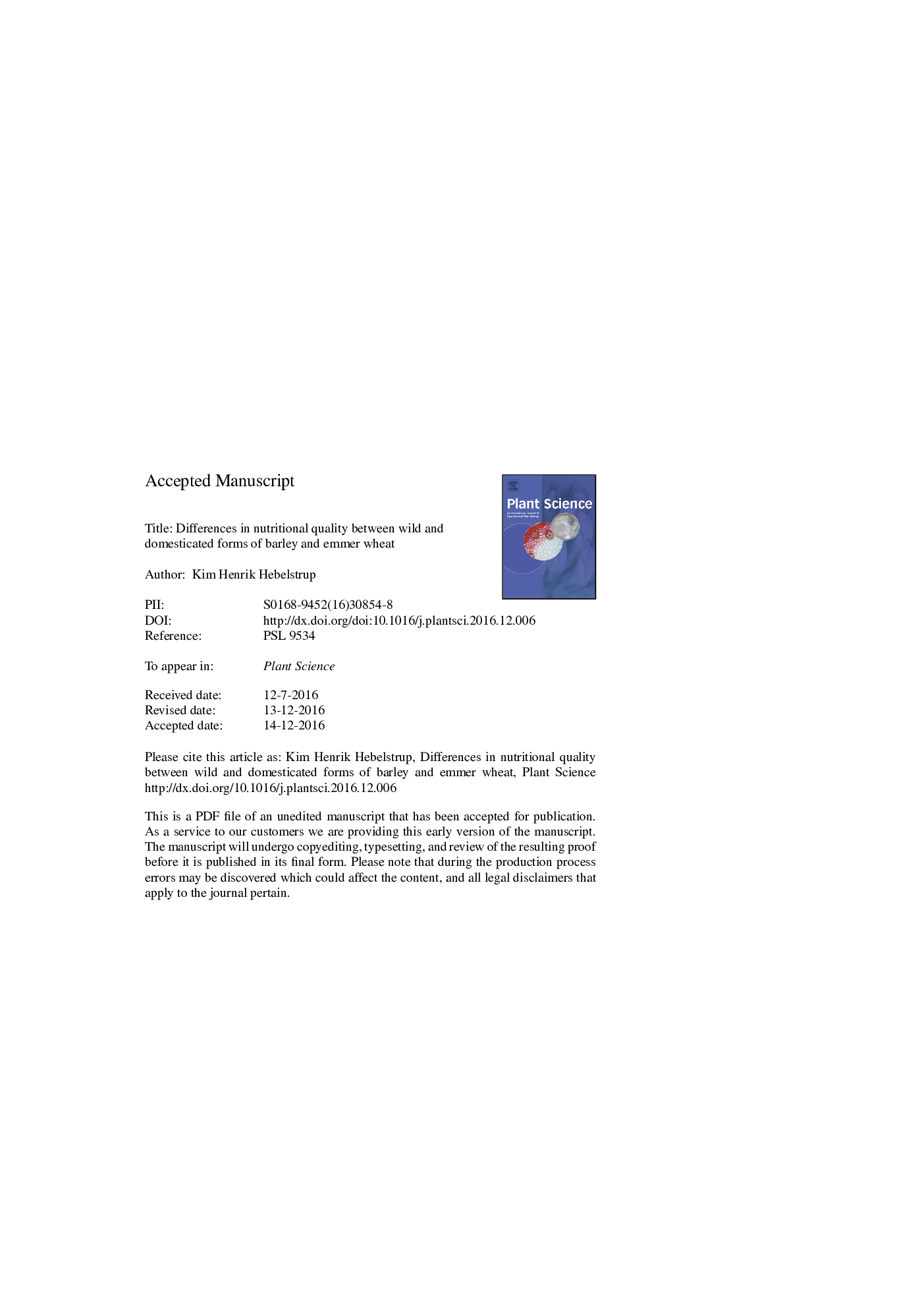| Article ID | Journal | Published Year | Pages | File Type |
|---|---|---|---|---|
| 5515814 | Plant Science | 2017 | 13 Pages |
Abstract
Grasses such as wheat and barley constitute some of the main crops currently cultivated worldwide. Cultivation of wild cereals such as Hordeum spontaneum (wild barley) and Triticum diccocoides (wild emmer) started in southwest Asia. Despite the many studies on the origins of agriculture and plant domestication, surprisingly few studies have discussed the importance of the nutritional quality of barley and emmer wheat in their evolution. A comparison of domesticated forms of these cereals with their wild progenitors suggests an evolution towards bigger grains with higher glycemic loads in the form of higher relative starch content with lower relative protein, fiber and mineral contents. In this work we hypothesize that in addition to the simple explanation that larger grains emerged under domestication, complex and indirect effects such as increased glycemic index and sweet taste should also be taken into consideration.
Related Topics
Life Sciences
Agricultural and Biological Sciences
Plant Science
Authors
Kim Henrik Hebelstrup,
